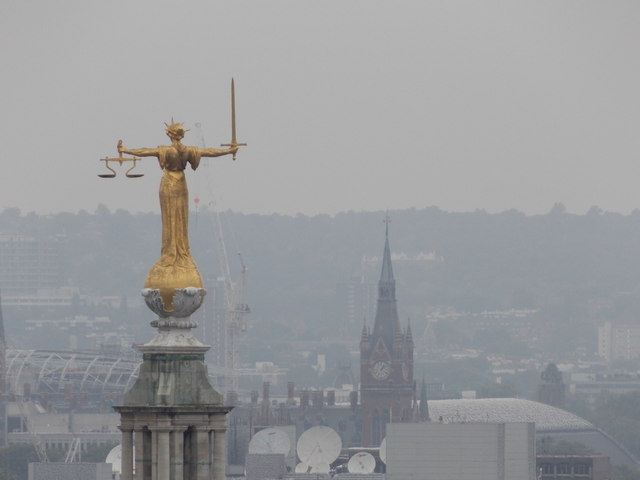Author: Prigya Arora, 1st year student of RGSOIPL, IIT Kharagpur Law School.
The pharmaceutical industry of India has matured over the
years into a major producer of bulk drugs, rated among the top five in the
world[1]. With the escalating
number of diseases, more resistant bacteria and constantly evolving viruses,
there is a constant increase in the demand of drugs in market. But making new
drugs and taking them into the market is a hellacious task. It includes a lot
of research and development and trials and rejections that leads to enormous
costs.
A new analysis conducted at Forbes puts grim numbers on these
costs. A company hoping to get a single drug to market can expect to have spent
$350 million before the medicine is available for sale. In part because so many
drugs fail, large pharmaceutical companies that are working on dozens of drug
projects at once spend $5 billion per new medicine[2].
To acknowledge the efforts and costs put up by the
pharmaceutical companies for this R&D, the novel drugs are given patents so
that these companies can get the exclusive rights to manufacture that drug
under The Patents Act, 1970. But once the patent expires, the formula of the
drug becomes open (generic) and anyone is free to produce and manufacture it.
The core issues for most drug companies are pricing, patent expiration of
number of drugs and increasing legal and regulatory concern. To recover these
high costs, the pharmaceutical companies try to maintain the monopoly in the
market by paying off small local cheap generic drug producers for keeping them
off the market. Some companies alter the compound and sell at much lower prices
which surely upsets the comparatively larger companies.
Such issues can be observed as in the case of F. Hoffmann-La Roche
Ltd. v. Cipla Ltd.[3]In 2008, Roche sued Cipla before Delhi High Court claiming that Cipla’s generic
product Erlocip violates Roche’s patent rights
over the Erlotinib Hydrochloride (EH); Indian Patent No. IN '774. Moreover,
Cipla’s generic version costs about 1/3rd of Roche’s patented drug. The Court
dismissed Roche's patent infringement suit in 2012. To counter such problems, the Competition Commission of India (CCI) which regulates
country’s competition may now examine the details of patent settlements being
negotiated between foreign branded medicine companies and local generic drug
makers as these agreements may restrict the access of cheaper drugs to the
unwell.
The other cases which CCI is likely to examine includes
patent infringement battle between Swiss drug maker Novartis and Indian biotech
firm Biocon, and the other between US-drug multinational Merck Sharp and Dohme
Corp. (MSD) and India’s Glenmark Pharmaceuticals Ltd., both these cases are
based on patent infringements of anti-diabetic drug of different kinds.
The argument is not that MNCs should be stopped from coming to India; the real concern is to guarantee that if they potentially harm competition, then steps are taken to ensure that the harmful effect is diluted. Generic drugs on the other hand, have become a necessity for the availability of cheap medicine to the poor class of India. With the involvement of CCI in the pharmaceutical sector, it is expected to bring a positive impact on the distribution of medicines in India as well as a check on prices charged to the customers.
The argument is not that MNCs should be stopped from coming to India; the real concern is to guarantee that if they potentially harm competition, then steps are taken to ensure that the harmful effect is diluted. Generic drugs on the other hand, have become a necessity for the availability of cheap medicine to the poor class of India. With the involvement of CCI in the pharmaceutical sector, it is expected to bring a positive impact on the distribution of medicines in India as well as a check on prices charged to the customers.
In
the past, until the passage of the CCI’s involvement, these issues were managed
by administrative decisions of ministries and the Foreign Investment Promotion
Board (FIPB) route. This approach had the impression of arbitrariness of
government decisions. On the contrary, CCI operates within a well defined
structure, providing legal certainty and transparency to the parties with
clearly defined appellate processes. The Competition Act, 2002 empowers the
Commission to evaluate all aspect of the proposed deal such as reduction of
capacities for production or R&D and market distorting issues related to
ownership of IPR. Further, this structure has in-built systems for consultation
with appropriate sources, including ministries, department of government and
designated persons or cells in these organizations[4].
Government
of India has taken a very optimistic decision to allow CCI to be the watchdog
of pharmaceutical settlements. As the role and powers of the CCI have been
notified very recently, the ultimate test of their efficacy lies in the
implementation. Both domestic and foreign pharmaceutical companies must realize
the importance of public health and the need for affordable and accessible
medicines to all consumers in a densely populated country like India and must
rearrange their business models to serve the larger purpose.
Disclaimer: This blog or any post thereof
is not to be considered to be in any way associated with the official stand of
IIT kharagpur or RGSOIPL on the issues being discussed in the said post. The
opinions on the blog are the authors own and should not be considered as legal
advice.
[1] Dr. Geeta Gouri (Member: Competition Commission of India),
Competition Issues in the Generic Pharmaceuticals Industry in India,http://www.cci.gov.in/images/media/presentations/ComIssGenPharmIndusIndia_20100401142
[4]
“Foreign Direct Investment in Indian Pharmaceutical
industry”,http://cci.gov.in/images/media/ResearchReports/shahbaazInternreportdec2011.pdf















